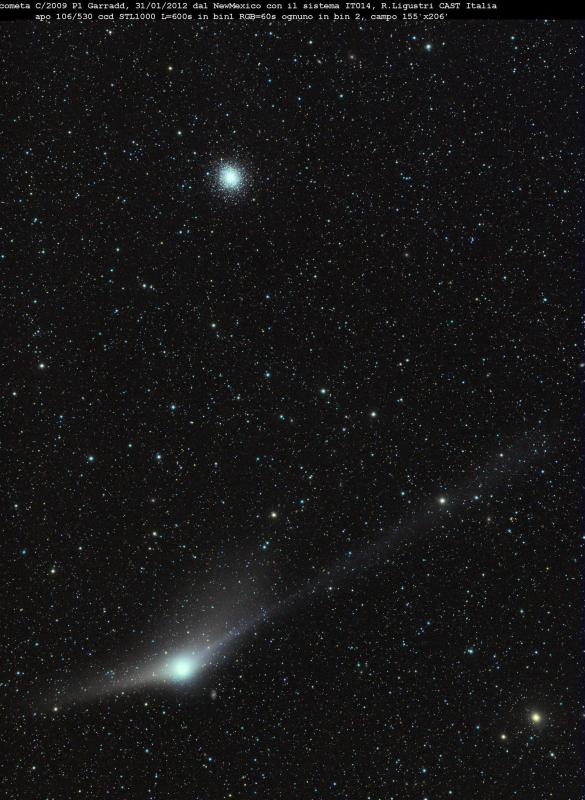
The star cluster and the comet are both located in the constellation Hercules, high overhead in northern hemisphere skies before sunrise. Sky and Telescope offers a sky map of the comet's path. Observers with computerized GOTO telescopes can track the comet by plugging in orbital elements from the Minor Planet Center.
At the moment, Comet Garradd has an astronomical magnitude of +6.5, invisible to the naked eye but an easy target for backyard telescopes. Forecasters expect it to brighten by a factor of ~2 in the weeks ahead as the comet approaches Earth for a 1.3 AU close encounter in early March. This could be a good time to invest in a Comet Hunter.
More Images:
From Lorenzo Comolli of Bogli, Italy; from Gregg Ruppel of Ellisville, MO; from Mike Broussard of Maurice, Louisiana; from Dr Paolo Candy of Ci.A.O. Cimini Astronomical Observatory - Italy



Reader Comments
to our Newsletter